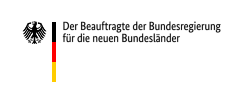Photographs by Wolfgang Blachnik & Bernd- Michel Schnabel
As part of the Görlitz photo festival “Schauplätze”, the exhibition is open to visitors from 10.09. – 01.11.20 in the gallery of the Fotomuseum, Löbauer Straße 7, Görlitz, Tue to Sun from 12:00-16:00.

Women in the labour shift
In the mid-1980s, the two Görlitz-based photographers Bernd Schnabel and Wolfgang Blachnik had the idea of taking pictures of everyday life in a typical GDR factory, where almost only woman had done their jobs. Upon express permission from the factory manager, they were allowed to capture their personal impressions, uncontrolled and uninfluenced by instructions.
They met women whose motivation to do their job was as different as their age. Diligence and exhaustion, pride and restraint, sobriety and pleasure … the two photographers experienced almost everything, while the initial social distance “melted away” and an almost self-evident cooperation between them and the staff evolved.
As a result, a series of portraits and impressions have been created, presenting snapshots of female production workers “on shift”. And thus, in an unembellished way also showing the conditions under which they fulfilled their tasks over thirty years ago.
———-
Bernd Schnabel (*1952) was born in Görlitz, completed an apprenticeship as an electric machine builder and worked at the former Hagenwerder power station near Görlitz. From an early age he was fascinated by photography and the possibility of using it to create emotions. His pictures are characterised by well thought-out design and honesty. When looking at his photographs, one is at par with them, feels addressed and taken into the author’s world of thoughts.
Wolfgang Blachnik (*1952) also worked at Hagenwerder power station. At “Fotoklub Energie” – initiated by Bernd Schnabel – he was also able to share, compare and improve his photographic work with others. Joint projects were developed and realised, including “Women in Shift”. In 1989 he turned to photography as a profession. Besides commissioned works he always kept space for his own ideas and their realisation.

